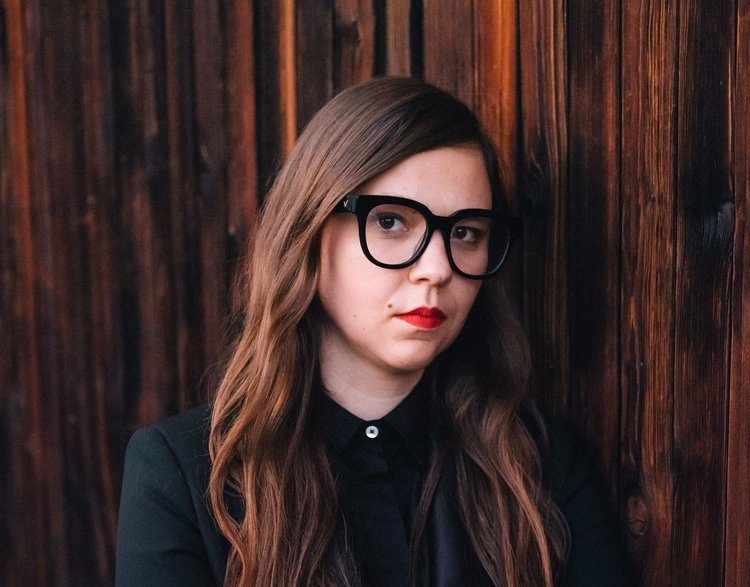
Norsk følger under
ECOPHILIA CONFERENCE / Meta.Morf 2022
Curator and moderator, Zane Cerpina, 2022
This conference is about love. About our love for nature. But what is nature really? Except for some made up ecological dreamscapes? Ecology comes from Greek Oikos, meaning home. But in this age of man-made catastrophes, has our home become unrecognizable and alien?
The doomsday scenarios and environmental apocalypses have become iconic images of nature today. Yet the same bleak visions of the future lure us back to nature. We have this innate desire for a natural condition. As if we need that green, lush, fertile and romantic portrait of a paradise lost. Some wonderful place we once belonged.
Then again, what is nature? Can it really be pure? Pristine? Saved? Or is it, as many experience it; arrogant, fierce, unforgiving and even destructive? And what about man-made nature? Should we embrace it or once for all cancel it? And why do we care so much about the division man versus nature?
Meta.Morf 2022 – Ecophilia Conference explores contemporary forms and manifestations of human affection to nature. The conference investigates what it means to be a real ecophile –a true lover of nature– in our world marked by new technologies, environmental disasters, biotechnological wonders, and blurred borders between the made and the natural.
American biologist Edward O. Wilson defines biophilia as an innate urge to affiliate with other forms of life. To him, our human love for nature is a product of biological evolution. We are dependent on nature and its resources to survive and thrive. Therefore it is only natural to seek close bonds with it. Likewise ecophilia refers to our desire and impulse to connect, merge, and become one with nature. Yet there is no universal understanding of it.
Today we find ourselves in the Anthropocene – a new geological epoch marked by massive human impact on the planet Earth. We no longer roam around the savannah like our ancestors did. More than half of us live in cities with pristine nature at a great distance. Most of us build our image, experience and definition of nature through the optics of digital technologies. With our environment and lifestyle having shifted so profoundly, what exactly do we mean by nature that we so desperately desire to connect to? Desperation is always interesting to examine, and our conference speakers do so by investigating ecophilia from several perspectives, desires and a wide range of creative angles and disciplines.
So what is this nature that we are so attached to? Is it the color green? Is green really as ecological as we like to think? Does nature need rewilding? Or is it the culturally bound concept of nature that has to be revised.
Are technologies expanding or limiting our experiences and understandings of the nonhuman world? Can Artificial Intelligence (AI) help us to build new relationships with nature? Or should we instead genetically modify our own bodies to become better and naturalized ecophiles?
Can one be too much of an ecophile? And what happens when our relationship with nature turns into something sexual – an ecosexual fetish? Do we need to understand the role sexuality plays in our relationship to ecology?
How to move on if our ecophiliac actions feel like outright failures? What to do when you are weighed down by eco-guilt? Are we eco-shamed? And how is our relationship to nature shaped not only by -philia (affection for) but also -phobia (obsessive fear of)?
The Ecophilia Conference critically questions what it truly means to be an ecophile in the age of the Anthropocene.
Let’s pull the green curtain away and get dirty.
ECOPHILIA KONFERANSE / Meta.Morf 2022
Kurator and moderator, Zane Cerpina, 2022
Denne konferansen handler om kjærlighet. Om vår kjærlighet til naturen. Men hva er egentlig natur? Bortsett fra noen oppdiktede økologiske drømmelandskap? Økologi kommer fra det greske Oikos, som betyr hjem. Men i denne tiden med menneskeskapte katastrofer, har hjemmet vårt blitt ugjenkjennelig og fremmed?
Dommedagsscenarioene og miljøapokalypsene har blitt ikoniske bilder av naturen i vår tid. Likevel lokker de samme dystre fremtidsvisjonene oss tilbake til naturen. Vi har dette medfødte ønsket om en naturlig tilstand. Som om vi trenger det grønne, frodige, fruktbare og romantiske portrettet av et tapt paradis. Et fantastisk sted vi en gang tilhørte.
Så igjen, hva er natur? Kan den virkelig være ren? Uberørt? Reddet? Eller er den, slik mange opplever den, arrogant, voldsom, uforsonlig og til og med destruktiv? Og hva med menneskeskapt natur? Skal vi omfavne den eller en gang for alle avslutte den? Og hvorfor bryr vi oss så mye om inndelingen menneske versus natur?
Meta.Morf 2022 – Ecophilia-konferansen utforsker moderne former og manifestasjoner av menneskets hengivenhet til naturen. Konferansen undersøker hva det vil si å være en ekte økofil –en ekte naturelsker– i vår verden preget av ny teknologi, miljøkatastrofer, bioteknologiske underverker og uskarpe skillelinjer mellom det fremstilte og det naturlige.
Den amerikanske biologen Edward O. Wilson definerer biofili som en medfødt trang til å knytte seg til andre livsformer. For ham er vår menneskelige kjærlighet til naturen et produkt av biologisk evolusjon. Vi er avhengige av naturen og dens ressurser for å overleve og trives. Derfor er det helt naturlig å søke nære bånd med den. På samme måte viser økofili til vårt ønske og vår impuls til å knytte oss til, smelte sammen med og bli ett med naturen. Likevel er det ingen universell forståelse av den.
I dag befinner vi oss i antropocen – en ny geologisk epoke preget av massiv menneskelig påvirkning på planeten vår. Vi streifer ikke lenger rundt på savannen slik våre forfedre gjorde. Mer enn halvparten av oss bor i byer langt unna uberørt natur. De fleste av oss bygger vårt selvbilde, vår opplevelse og definisjon av naturen gjennom optikken i digitale teknologier. Når miljøet og livsstilen vår har endret seg i så stor grad, hva mener vi egentlig med natur som vi så desperat ønsker å knytte oss til? Desperasjon er alltid interessant å undersøke, og våre konferansedeltakere gjør det ved å undersøke økofili fra flere perspektiver og ønsker og et bredt spekter kreative vinkler og disipliner.
Så hva er denne naturen vi er så knyttet til? Er det fargen grønn? Er grønt virkelig så økologisk som vi liker å tro? Trenger naturen gjenoppretting? Eller er det det kulturelt bundne naturbegrepet som må revideres?
Utvider eller begrenser teknologi våre erfaringer og forståelser av den ikke-menneskelige verden? Kan kunstig intelligens hjelpe oss med å bygge nye relasjoner til naturen? Eller bør vi i stedet genmodifisere vår egen kropp for å bli bedre og naturaliserte økofile?
Kan man være for mye økofil? Og hva skjer når forholdet vårt til naturen blir noe seksuelt – en økoseksuell fetisj? Trenger vi å forstå hvilken rolle seksualitet spiller i vårt forhold til økologi?
Hvordan fortsette hvis våre økofile handlinger føles som direkte fiaskoer? Hva gjør du når du er tynget av øko-skyld? Er vi øko-skammet? Og hvordan er vårt forhold til naturen formet, ikke bare av -fili (kjærlighet for), men også -fobi (tvangsmessig frykt for)?
Ecophilia-konferansen stiller kritiske spørsmål ved hva det virkelig vil si å være en økofil i antropocen-epoken.
La oss ta bort det grønne teppet og skitne oss til.

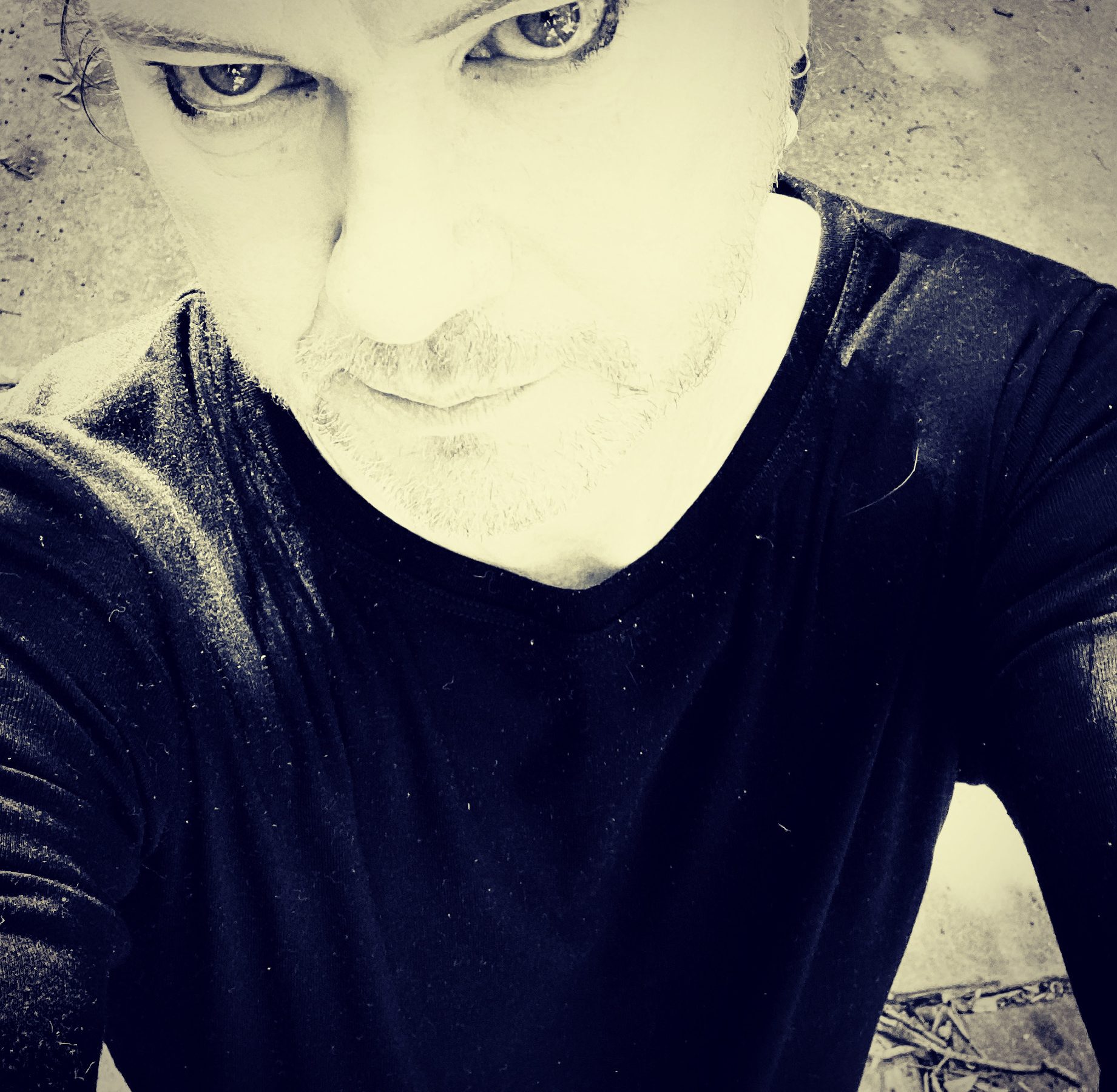

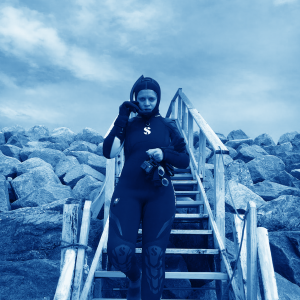 Miriam Simun works where bodies (human and non) collide with rapidly evolving techno-ecosystems. Trained as a sociologist, Simun spends time in communities of experts from biomedical engineers to breastfeeding mothers to farm laborers to freedivers. Taking on the role of ‘artist-as-fieldworker,’ the process is lived, embodied and complicated. Spanning multiple formats, Simun’s works include video, installation, performance, writing, and communal sensorial experiences, always forefronting corporeal and embodied ways of listening, knowing, and being.
Miriam Simun works where bodies (human and non) collide with rapidly evolving techno-ecosystems. Trained as a sociologist, Simun spends time in communities of experts from biomedical engineers to breastfeeding mothers to farm laborers to freedivers. Taking on the role of ‘artist-as-fieldworker,’ the process is lived, embodied and complicated. Spanning multiple formats, Simun’s works include video, installation, performance, writing, and communal sensorial experiences, always forefronting corporeal and embodied ways of listening, knowing, and being.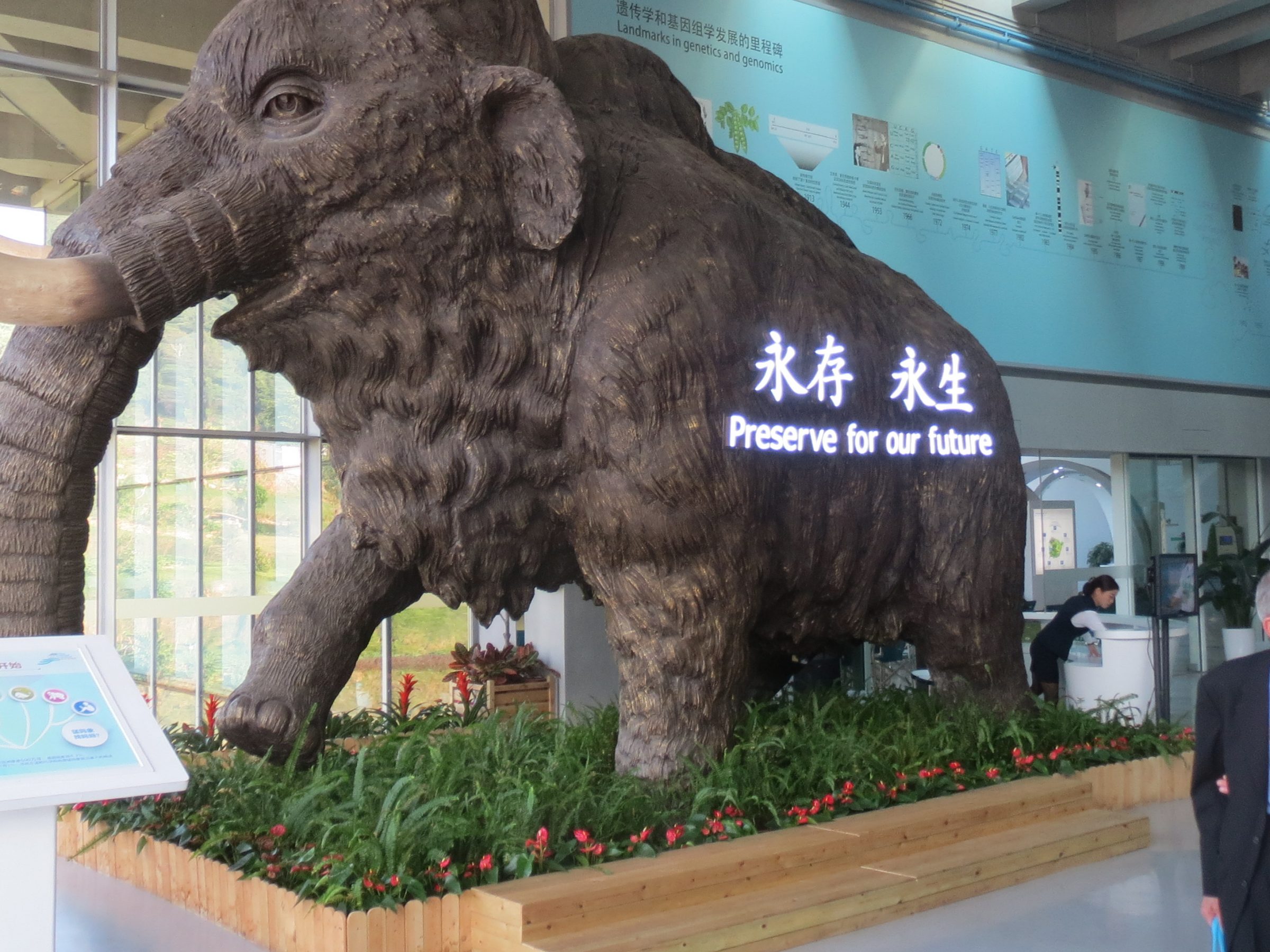
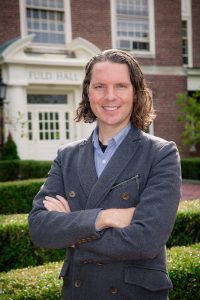 Eben Kirksey is an American anthropologist who writes about science and justice. He is best known for his pioneering work in
Eben Kirksey is an American anthropologist who writes about science and justice. He is best known for his pioneering work in 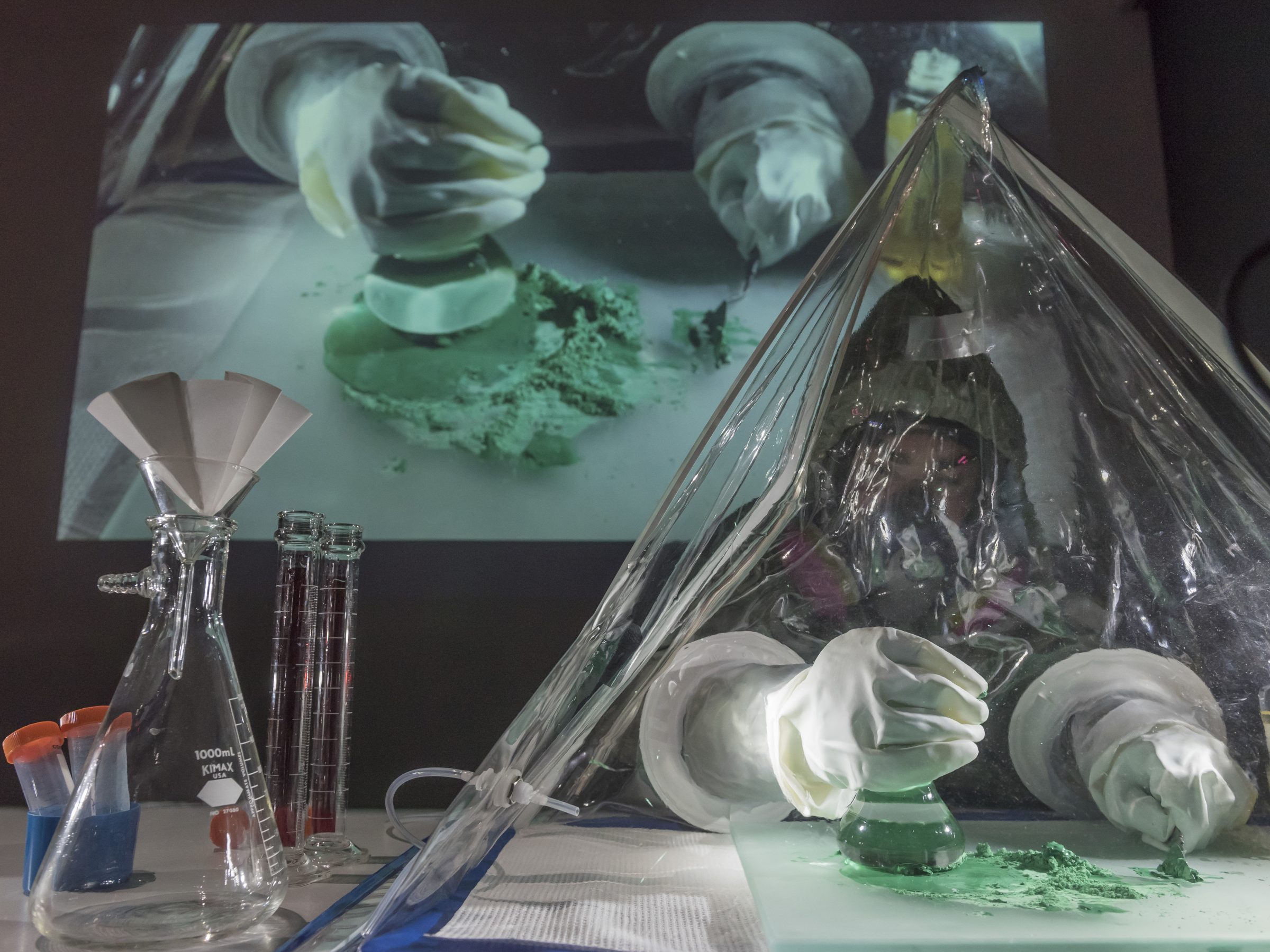
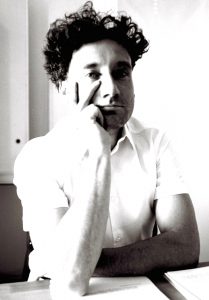 Jens Hauser is a Paris and Copenhagen based media studies scholar and art curator focusing on the interactions between art and technology, trans-genre and hybrid aesthetics. He is currently a Senior postdoc researcher at Medical University Vienna and a guest researcher at University of Copenhagen’s Medical Museion, following a dual post-doctoral research position at the Faculty of Humanities and the Faculty of Health and Medical Sciences, and coordinates the OU\ /ERT network for Greenness Studies. He is also a distinguished affiliated faculty member of the Department of Art, Art History and Design at Michigan State University, where he co-directs the BRIDGE artist in residency program, an affiliated faculty member at the Department for Image Science at Danube University Krems, a guest lecturer at the University of Applied Arts Vienna and at the University of Innsbruck, a guest professor at the Department of Arts and Sciences of Art at Université Paris I Panthéon-Sorbonne, and a researcher affiliated with École Polytechnique Paris-Saclay. Hauser has been the chair of the European Society for Literature, Science and the Arts’ 2018 conference in Copenhagen. At the intersection of media studies, art history and epistemology, he has previously developed an aesthetic and epistemological theory of biomediality as part of his PhD at Ruhr University Bochum, and also holds a degree in science and technology journalism from Université François Rabelais in Tours. His curated exhibitions include L’Art Biotech (Nantes, 2003), Still, Living (Perth, 2007), sk-interfaces (Liverpool, 2008/Luxembourg, 2009), the Article Biennale (Stavanger, 2008), Transbiotics (Riga 2010), Fingerprints… (Berlin, 2011/Munich/2012) Synth-ethic (Vienna, 2011), May the Horse live in me – Art Orienté objet (Ljubljana, 2011), assemble | standard | minimal (Berlin, 2015), SO3 (Belfort, 2015) WETWARE (LA, 2016), Devenir Immobile (Nantes, 2018), {un][split} (Munich, 2018), MATTER/S matter/s (Lansing, 2018), Applied Microperformativity (Vienna, 2018), UN/GREEN (Riga, 2019), OU \ / ERT (Bourges, 2019), Holobiont. Life is Other (Bregenz, 2021), and gREen: Sampling Color/Farbe Vermessen (Munich, 2021) among other co-curated exhibitions and performance projects. Hauser serves on international juries of art awards such as Ars Electronica, Transitio or Vida, as well as of several national science foundations. He is also a founding collaborator of the European culture channel ARTE since 1992, has produced numerous reportages and radio features for German and French public broadcasting services, and widely published essays in print journalism and in art books for many years.
Jens Hauser is a Paris and Copenhagen based media studies scholar and art curator focusing on the interactions between art and technology, trans-genre and hybrid aesthetics. He is currently a Senior postdoc researcher at Medical University Vienna and a guest researcher at University of Copenhagen’s Medical Museion, following a dual post-doctoral research position at the Faculty of Humanities and the Faculty of Health and Medical Sciences, and coordinates the OU\ /ERT network for Greenness Studies. He is also a distinguished affiliated faculty member of the Department of Art, Art History and Design at Michigan State University, where he co-directs the BRIDGE artist in residency program, an affiliated faculty member at the Department for Image Science at Danube University Krems, a guest lecturer at the University of Applied Arts Vienna and at the University of Innsbruck, a guest professor at the Department of Arts and Sciences of Art at Université Paris I Panthéon-Sorbonne, and a researcher affiliated with École Polytechnique Paris-Saclay. Hauser has been the chair of the European Society for Literature, Science and the Arts’ 2018 conference in Copenhagen. At the intersection of media studies, art history and epistemology, he has previously developed an aesthetic and epistemological theory of biomediality as part of his PhD at Ruhr University Bochum, and also holds a degree in science and technology journalism from Université François Rabelais in Tours. His curated exhibitions include L’Art Biotech (Nantes, 2003), Still, Living (Perth, 2007), sk-interfaces (Liverpool, 2008/Luxembourg, 2009), the Article Biennale (Stavanger, 2008), Transbiotics (Riga 2010), Fingerprints… (Berlin, 2011/Munich/2012) Synth-ethic (Vienna, 2011), May the Horse live in me – Art Orienté objet (Ljubljana, 2011), assemble | standard | minimal (Berlin, 2015), SO3 (Belfort, 2015) WETWARE (LA, 2016), Devenir Immobile (Nantes, 2018), {un][split} (Munich, 2018), MATTER/S matter/s (Lansing, 2018), Applied Microperformativity (Vienna, 2018), UN/GREEN (Riga, 2019), OU \ / ERT (Bourges, 2019), Holobiont. Life is Other (Bregenz, 2021), and gREen: Sampling Color/Farbe Vermessen (Munich, 2021) among other co-curated exhibitions and performance projects. Hauser serves on international juries of art awards such as Ars Electronica, Transitio or Vida, as well as of several national science foundations. He is also a founding collaborator of the European culture channel ARTE since 1992, has produced numerous reportages and radio features for German and French public broadcasting services, and widely published essays in print journalism and in art books for many years.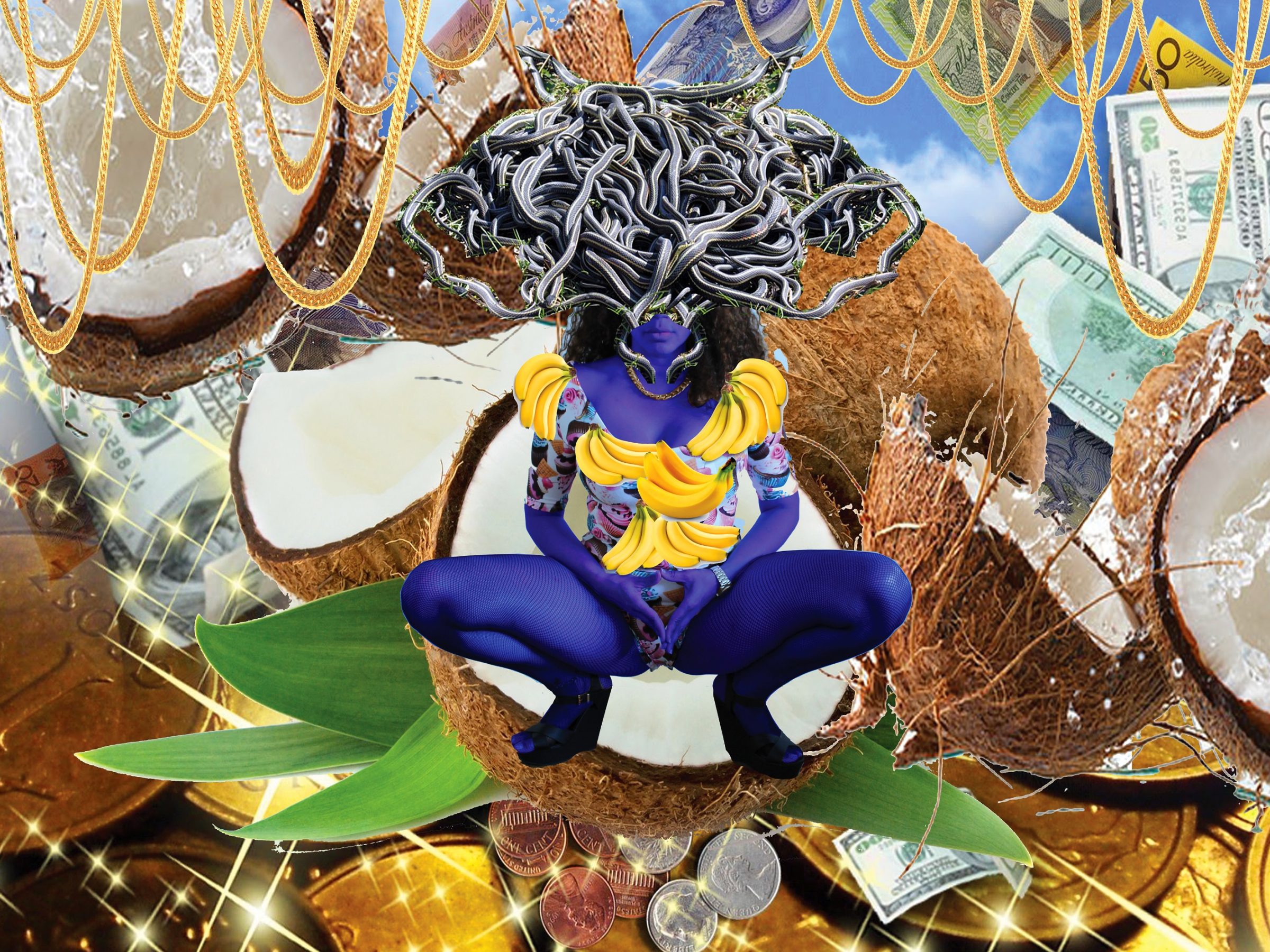
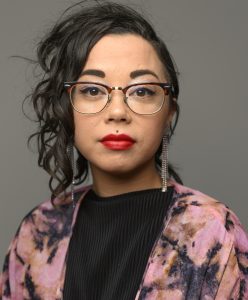 Katrine Elise Pedersen (1988) is an art historian and curator based in Trondheim, Norway. She earned her MA in Art History at the University of Oslo (UiO). Her art historical research has often centred on (the exclusion or inclusion of) the body in performative contexts. Pedersen is curator and producer at Kunsthall Trondheim, and was a part of the curatorial team of Sex Ecologies with Prerna Bishnoi Carl Martin Faurby, Kaja Grefslie Waagen, with Katja Aglert (The Seed Box) and Stefanie Hessler (Kunsthall Trondheim) as project leaders.
Katrine Elise Pedersen (1988) is an art historian and curator based in Trondheim, Norway. She earned her MA in Art History at the University of Oslo (UiO). Her art historical research has often centred on (the exclusion or inclusion of) the body in performative contexts. Pedersen is curator and producer at Kunsthall Trondheim, and was a part of the curatorial team of Sex Ecologies with Prerna Bishnoi Carl Martin Faurby, Kaja Grefslie Waagen, with Katja Aglert (The Seed Box) and Stefanie Hessler (Kunsthall Trondheim) as project leaders.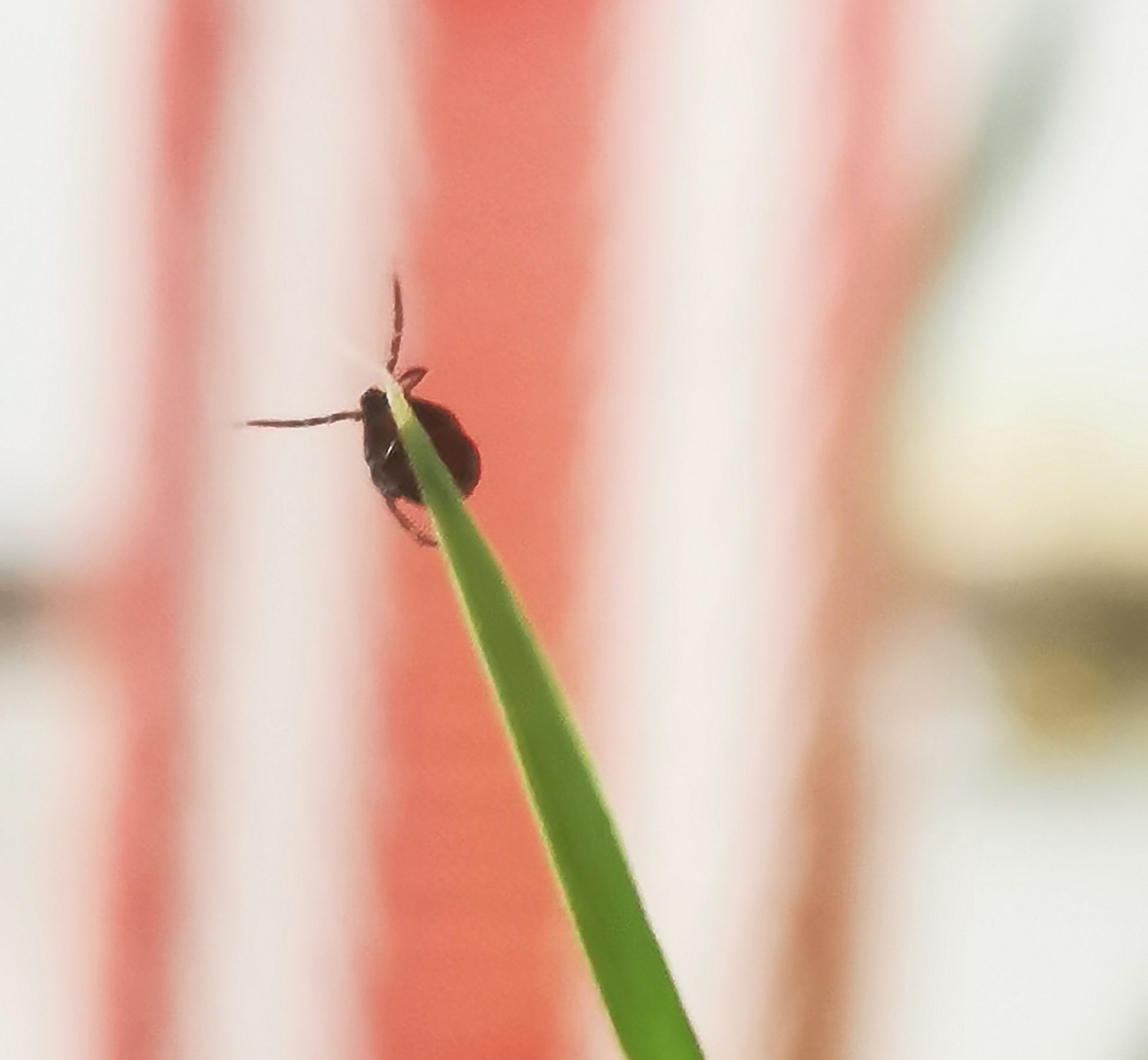
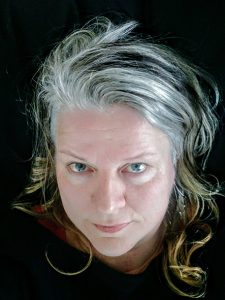 Laura Beloff (Ph.D.) is an internationally acclaimed artist and researcher based in Finland. She functions in-between artistic production and academic research with a core in artistic methods. Beloff’s concept- and practice-driven research is located in the cross section of art, science and technology. The research engages with the areas such as human enhancement, biosemiotics, biological matter, artificial life, artificial intelligence, robotics, and information technology in connection to art, humans, environment and society. The specific interest in recent years is in the diminishing gap between concepts and disciplines of biology and technology. The outcome of her research manifests in exhibited art works, innovative practice-based experiments, wearable artefacts, process-based and participatory installations exploring the merger of art, technology, biology and environments – as well as in research papers, articles and invited chapters in a variety of publications and conferences.
Laura Beloff (Ph.D.) is an internationally acclaimed artist and researcher based in Finland. She functions in-between artistic production and academic research with a core in artistic methods. Beloff’s concept- and practice-driven research is located in the cross section of art, science and technology. The research engages with the areas such as human enhancement, biosemiotics, biological matter, artificial life, artificial intelligence, robotics, and information technology in connection to art, humans, environment and society. The specific interest in recent years is in the diminishing gap between concepts and disciplines of biology and technology. The outcome of her research manifests in exhibited art works, innovative practice-based experiments, wearable artefacts, process-based and participatory installations exploring the merger of art, technology, biology and environments – as well as in research papers, articles and invited chapters in a variety of publications and conferences.
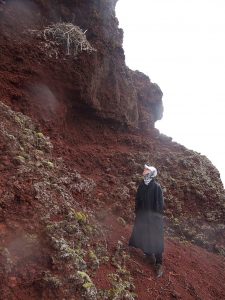 Marius Presterud (b.1980, Drammen) is a Norwegian artist based in Berlin and Oslo. He works across a variety of media; performance, poetry, sculpture and ecoventions. He has toured Europe and been a featured poet at venues in Paris, Berlin and Istanbul, and he has performed in established galleries such as Henie Onstad Art Center, Norway, and Hamburger Bahnhof, Germany. In 2018 he was a debutant at Norway’s 131. National Art Exhibition, Høstutstillingen, and in 2021 he had his first solo exhibition abroad, at Exgirlfriend Gallery, Berlin. Common themes throughout his work are a focus on selfhood, significant otherness and societal health.
Marius Presterud (b.1980, Drammen) is a Norwegian artist based in Berlin and Oslo. He works across a variety of media; performance, poetry, sculpture and ecoventions. He has toured Europe and been a featured poet at venues in Paris, Berlin and Istanbul, and he has performed in established galleries such as Henie Onstad Art Center, Norway, and Hamburger Bahnhof, Germany. In 2018 he was a debutant at Norway’s 131. National Art Exhibition, Høstutstillingen, and in 2021 he had his first solo exhibition abroad, at Exgirlfriend Gallery, Berlin. Common themes throughout his work are a focus on selfhood, significant otherness and societal health.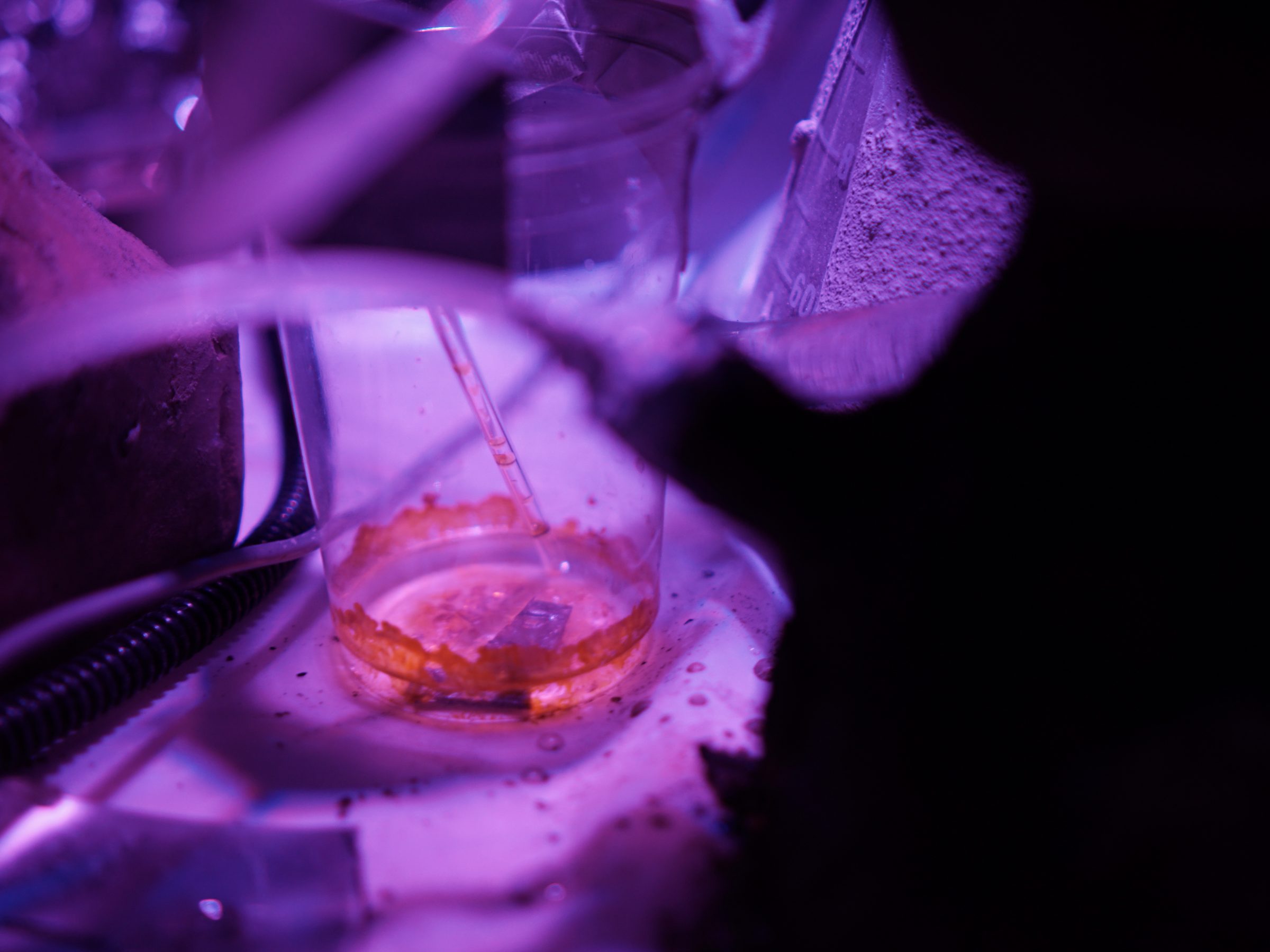
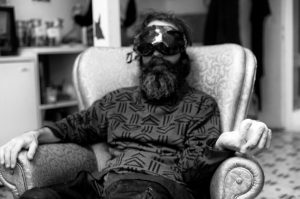 Martin Howse is occupied with an investigation of the links between the earth (geological and geophysical phenomena), software and the a/human psyche (psychogeophysics) through the construction of experimental situations (performance, laboratories, walks, and workshops), material art works, instruments, fictions, texts and software.
Martin Howse is occupied with an investigation of the links between the earth (geological and geophysical phenomena), software and the a/human psyche (psychogeophysics) through the construction of experimental situations (performance, laboratories, walks, and workshops), material art works, instruments, fictions, texts and software.